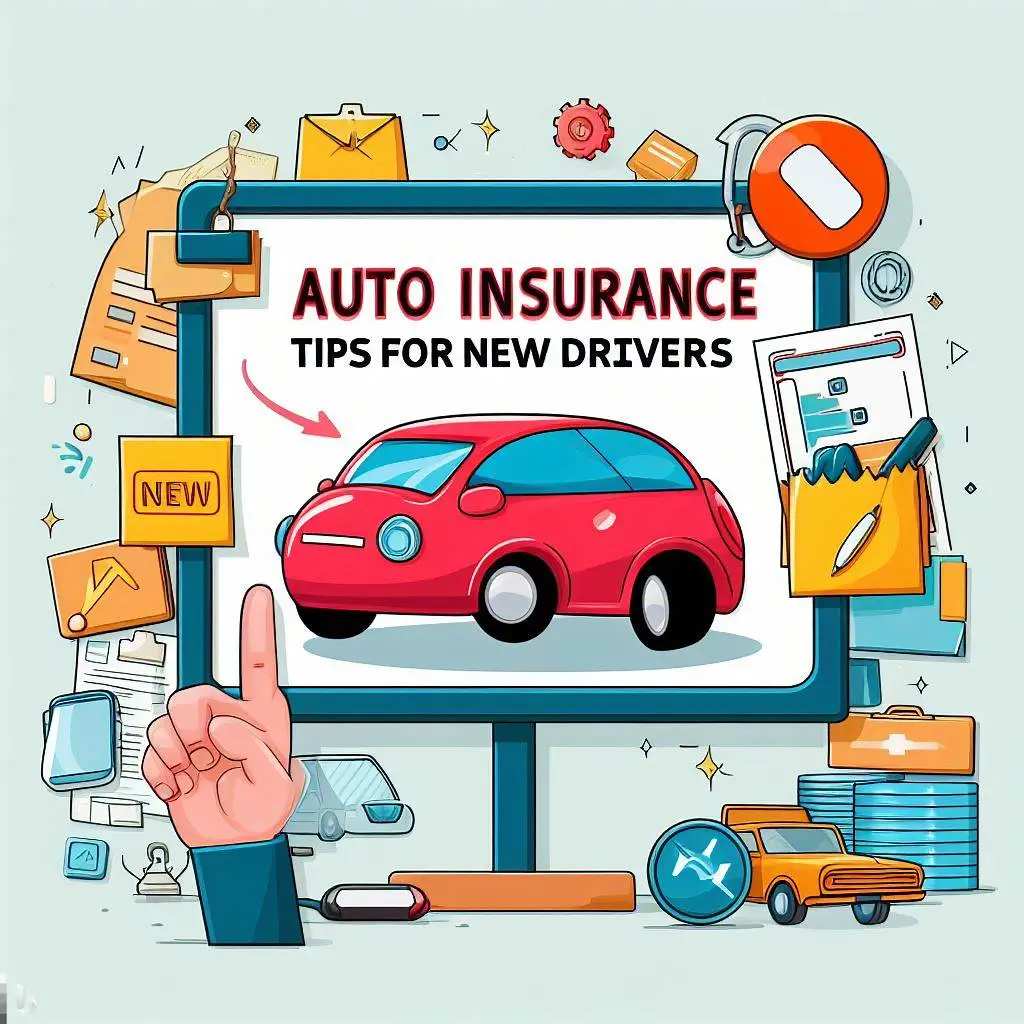New Driver Insurance Guide: Save Money on Car Insurance in Ontario
Published on
Getting your driver's license is an exciting milestone, but for many new drivers in Ontario, the reality of car insurance costs can be overwhelming. As a new driver, you'll likely face higher insurance premiums due to your lack of driving experience. However, with the right knowledge and strategies, you can significantly reduce your insurance costs while maintaining adequate coverage. This comprehensive guide will help you understand Ontario's insurance system, find the best deals, and save money on your car insurance.

Understanding Ontario's Auto Insurance System
Ontario has a unique auto insurance system that combines private insurance companies with government oversight. Understanding how this system works is crucial for new drivers looking to save money.
Basic Coverage Requirements
In Ontario, all drivers must carry minimum insurance coverage:
- Third-Party Liability: Minimum $200,000 coverage for injuries and property damage to others
- Statutory Accident Benefits: Coverage for medical expenses, income replacement, and other benefits
- Direct Compensation - Property Damage: Coverage for damage to your vehicle when not at fault
- Uninsured Automobile Coverage: Protection against uninsured or hit-and-run drivers
Optional Coverage Types
While not legally required, these coverages can provide valuable protection:
- Collision Coverage: Pays for damage to your vehicle from accidents
- Comprehensive Coverage: Covers theft, vandalism, weather damage, and other non-collision incidents
- All Perils: Combines collision and comprehensive coverage
- Specified Perils: Covers specific risks like fire, theft, or hail damage
Why New Drivers Pay Higher Insurance Rates
Insurance companies consider new drivers to be higher risk, which results in higher premiums. Here's why:
Risk Factors for New Drivers:
- Lack of Driving Experience: New drivers haven't proven their ability to drive safely over time
- Higher Accident Rates: Statistics show new drivers are more likely to be involved in accidents
- No Insurance History: Insurers can't assess your claims history or driving behavior
- Age Factor: Younger drivers (under 25) typically pay higher rates due to risk statistics
- Vehicle Type: New drivers often choose vehicles that are expensive to insure
Strategies to Reduce Insurance Costs
1. Take a Beginner Driver Education (BDE) Course
Completing an approved BDE course is one of the most effective ways to reduce insurance costs:
- Discount Amount: Typically 10-20% off your premium
- Course Requirements: Must be MTO-approved and include 20 hours of in-class instruction and 10 hours of in-car training
- Long-term Benefits: The discount can last for several years
- Additional Benefits: Reduces G1 to G2 waiting period from 12 to 8 months
2. Choose Your Vehicle Wisely
The vehicle you drive significantly impacts your insurance costs. Consider these factors:
High Insurance Cost Vehicles:
- Sports cars and high-performance vehicles
- Luxury vehicles with expensive repair costs
- Vehicles with high theft rates
- Large trucks and SUVs
Lower Insurance Cost Vehicles:
- Small to mid-size sedans
- Vehicles with good safety ratings
- Older, less expensive vehicles
- Vehicles with low theft rates
3. Increase Your Deductible
Choosing a higher deductible can significantly reduce your premium:
- Standard Deductibles: $500-$1,000
- Higher Deductibles: $1,500-$2,500
- Savings Potential: 15-30% reduction in premium
- Consideration: Ensure you can afford the higher deductible in case of a claim
4. Bundle Your Insurance
Combining multiple insurance policies with the same company can provide discounts:
- Auto + Home: Combine car and home insurance
- Auto + Tenant: Combine car and tenant insurance
- Discount Amount: Typically 5-15% off total premiums
- Convenience: Manage all policies in one place
5. Maintain a Clean Driving Record
Your driving record directly impacts your insurance costs:
- No Claims: Avoid accidents and traffic violations
- Defensive Driving: Take additional driving courses
- Graduated Licensing: Successfully complete G1, G2, and G tests without issues
- Time Factor: Rates decrease as you gain more driving experience
Understanding Insurance Discounts
Common Discounts Available:
- Multi-Vehicle Discount: Insure multiple vehicles with the same company
- Good Student Discount: Maintain good grades (typically B average or higher)
- Alumni Discount: Graduate from specific universities or colleges
- Professional Discount: Work in certain professions (teachers, engineers, etc.)
- Telematics Discount: Use usage-based insurance programs
- Winter Tire Discount: Install winter tires during winter months
Usage-Based Insurance Programs:
Many insurers offer programs that monitor your driving behavior:
- How It Works: Device or app monitors speed, braking, acceleration, and driving times
- Potential Savings: 10-30% for good driving habits
- Privacy Considerations: Understand what data is collected and how it's used
- Best For: Drivers who are confident in their safe driving habits
Shopping for Insurance: How to Compare Quotes
What Information You'll Need:
- Personal Information: Age, gender, marital status, occupation
- Driving History: License history, accidents, tickets, claims
- Vehicle Information: Make, model, year, VIN, purchase price
- Coverage Preferences: Desired coverage types and limits
- Usage Information: Annual mileage, primary use, parking location
How to Get the Best Quotes:
- Shop Multiple Companies: Get quotes from at least 5-10 insurers
- Compare Identical Coverage: Ensure you're comparing the same coverage levels
- Ask About All Discounts: Inquire about every available discount
- Consider Different Payment Options: Annual vs. monthly payments
- Read Reviews: Check customer satisfaction and claims handling
Special Considerations for Different License Types
G1 License Holders:
- Limited Coverage: May have restrictions on when and where you can drive
- Supervisor Requirements: Must have a fully licensed driver with you
- Higher Premiums: Rates may be higher due to supervision requirements
G2 License Holders:
- More Flexibility: Can drive alone with some restrictions
- Better Rates: Generally lower than G1 but higher than full G license
- Passenger Restrictions: May have limitations on passengers under 19
Full G License Holders:
- Best Rates: Lowest insurance costs among new drivers
- Full Privileges: No driving restrictions
- Accelerated Discounts: May qualify for additional discounts
Insurance for Different Driver Types
Student Drivers:
- Good Student Discount: Maintain B average or higher
- School Distance: Living away from home may affect rates
- Summer vs. School Year: Usage patterns may change rates
Young Adult Drivers (18-25):
- Age-Based Rates: Rates typically decrease after age 25
- Marital Status: Married drivers often pay less
- Occupation: Certain jobs may qualify for discounts
Adult Learners (25+):
- Mature Student Discount: Some insurers offer special rates
- Life Experience: May qualify for additional discounts
- Employment History: Stable employment can reduce rates
Regional Considerations: Windsor-Specific Factors
Insurance costs vary by location, and Windsor has specific factors that affect rates:
Windsor Insurance Factors:
- Border Proximity: Higher rates due to cross-border traffic and theft risk
- Urban vs. Rural: City driving typically costs more than rural areas
- Crime Rates: Local theft and vandalism statistics affect rates
- Weather: Winter driving conditions may impact premiums
Tips for Windsor Drivers:
- Secure Parking: Park in a garage or secure area when possible
- Anti-Theft Devices: Install approved security systems
- Winter Preparation: Use winter tires for potential discounts
- Local Discounts: Ask about Windsor-specific discounts
Common Insurance Mistakes to Avoid
Mistake 1: Choosing Minimum Coverage
Problem: Selecting only the legally required minimum coverage
Solution: Consider your assets and potential liability when choosing coverage limits
Mistake 2: Not Shopping Around
Problem: Accepting the first quote you receive
Solution: Always compare multiple quotes to ensure you're getting the best deal
Mistake 3: Lying on Your Application
Problem: Providing false information to get lower rates
Solution: Always be honest - false information can void your coverage
Mistake 4: Not Understanding Your Policy
Problem: Not reading or understanding your insurance policy
Solution: Take time to understand what's covered and what isn't
Mistake 5: Not Updating Your Information
Problem: Failing to update your insurer about life changes
Solution: Keep your insurer informed about address changes, new vehicles, etc.
Building a Positive Insurance History
Long-term Strategies:
- Start Early: Begin building your insurance history as soon as possible
- Stay Claim-Free: Avoid making small claims that could increase future rates
- Maintain Coverage: Don't let your insurance lapse
- Build Relationships: Stay with the same insurer when possible to build loyalty discounts
When to Review and Update Your Policy
Regular policy reviews can help ensure you're getting the best coverage at the best price:
Annual Review:
- Check for new discounts you may qualify for
- Compare rates with other insurers
- Update coverage based on life changes
- Review deductible amounts
Life Events That Require Updates:
- Getting married or divorced
- Moving to a new address
- Changing jobs
- Adding or removing drivers
- Purchasing a new vehicle
Conclusion: Smart Insurance Choices for New Drivers
While new drivers face higher insurance costs, there are many strategies to reduce these expenses. The key is to be proactive, shop around, and take advantage of every available discount. Remember that insurance is an investment in your financial protection, so it's important to balance cost savings with adequate coverage.
At Rajput Driving School, we understand that insurance costs can be a significant concern for new drivers. That's why we offer MTO-approved BDE courses that not only improve your driving skills but also provide substantial insurance discounts. Our comprehensive driver education program can save you hundreds of dollars annually on insurance while making you a safer, more confident driver.
Start your driving journey with the knowledge and skills that will keep you safe on the road and help you save money on insurance. Contact us today to learn more about our driver education programs and how they can benefit both your driving skills and your wallet.
Start Your BDE Course TodayCategories
Recent Posts
- Complete Roundabout Navigation Guide: Master Traffic Circles Safely
- Emergency Driving Situations: What to Do When Things Go Wrong
- What Happens If You Fail The G1 Test?
- Step-by-Step Guide to Getting Your G1, G2, and G Driver's Licence
- The G2 Road Test Examination Sheet Explained
- The G2 Road Test: How to Pass on Your First Try
- 10 Defensive Driving Tips That Can Save Your Life
- Failed the Ontario G Road Test? Here's What Happens Next
- Top 10 Reasons for Failing the G Road Test in Windsor, Ontario
- Winter Driving Safety: 10 Essential Tips
- 10 Reasons Why You Should Take Driver's Ed in Windsor, Ontario
- How to Parallel Park in 3 Easy Steps
- Top 5 Tips for Passing Your Driving Test in Windsor
- The Benefits of Taking Driving Lessons
- Understanding Ontario's Graduated Licensing System
